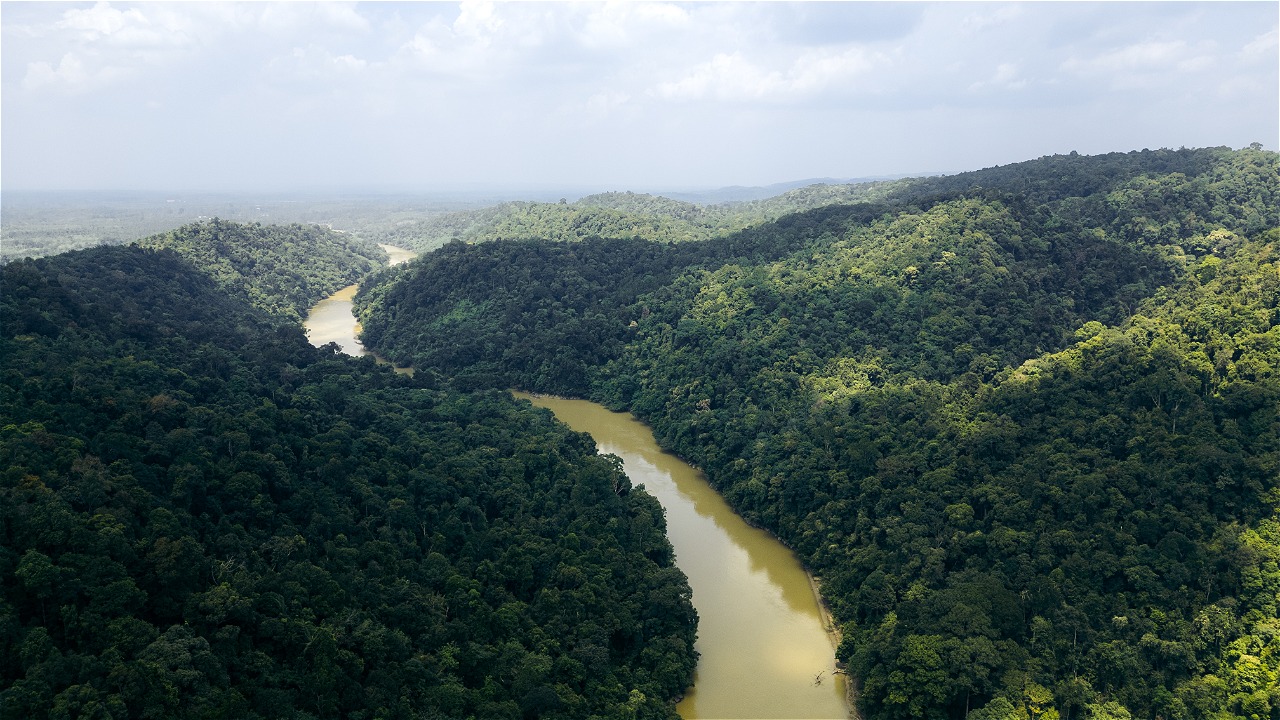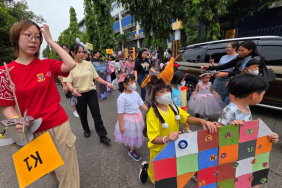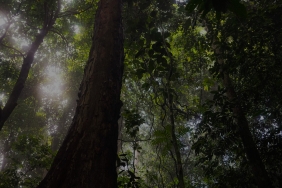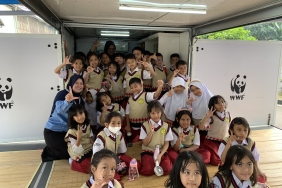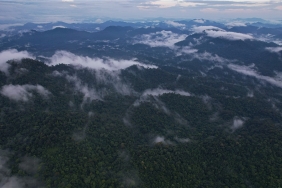GAIN INSIGHT INTO THE ENVIRONMENT WITH PANDA EARTH
By: Rosie Ferawati (Volunteer Bumi Panda)
As a home for environmental education, WWF-Indonesia's Panda Earth is often visited by people from all walks of life. Some of them are school students, as happened last Tuesday (09/27). A group of students from MI Manba'ul Huda visited Bumi Panda to gain knowledge about the environment. They were accompanied by their teachers and several volunteers from Bumi Panda.
The activities on that day were divided into three posts, namely the post of watching environmental animation films, the post of the Panda Earth tour, and the Water Lab post. All activities were carried out simultaneously. Each group will move to another post after the activities in one post are completed so that all children get their turn to play and learn in all posts.
At the movie station, the students watched an animated environmental movie called "The Hunter and the Tiger". They also watched a video showing the relationship between human life and animal life. From the movie and video, the children came to understand that the lives of humans and animals are not much different, as well as their relationship with the environment that affects each other. "Wow, the elephant drinks too, just like us!" said Rafi, a 4th grade student of MI Manba'ul Huda while watching a video showing a scene of humans and elephants both drinking water.
The next post was the Panda Earth tour. In this activity, the children got an explanation about WWF and protected animals in Indonesia. They paid good attention to every explanation given, even they actively asked questions and gave comments on the explanation of the animals that must be protected in Indonesia. One of the students named Viza asked, "Why is it that the rhino's culprit is taken?
The third post was the Water Lab. In this post, the children learned a lot about the uses of water for life, the benefits of water, and the current state of water. They were very enthusiastic when they saw the microorganisms in the water. With pool water samples viewed through a microscope, the students saw the difference between clean water and dirty water. That way, they are motivated to keep the environment clean so that the water sources they usually use remain clean.
After all the activities in each post were completed, all the children gathered in the Experience Room to do the last activity, which was making cloth bags from used clothes. Each child had brought an old t-shirt and scissors. They followed the directions given to make the cloth bag earnestly. When the cloth bags were finished, they were very happy and kept showing their bags. "Why do we make bags from T-shirts?" asked Abel, a 4th grader. "By having cloth bags, we can certainly reduce the use of plastic bags so that waste generation can be reduced," answered Manda, one of the volunteers at Bumi Panda.
Before leaving, the students, teachers, and Bumi Panda volunteers took a group photo. The accompanying teacher expressed his appreciation for Bumi Panda's presence as a home for environmental education. "Through the educational activities carried out by Bumi Panda WWF-Indonesia, I hope that children can develop a sense of concern for the environment with simple but good behavior for the environment as you have informed earlier," said Dian, MI Manba'ul Huda teacher.

